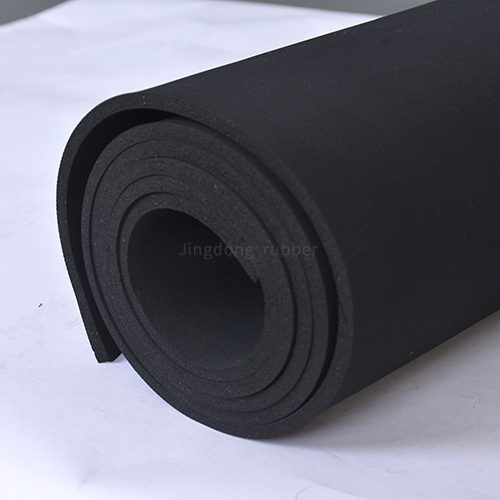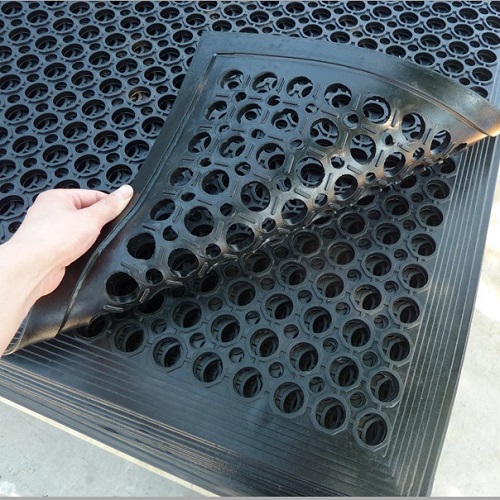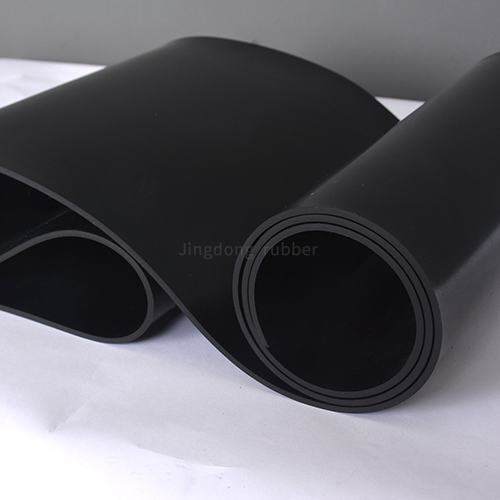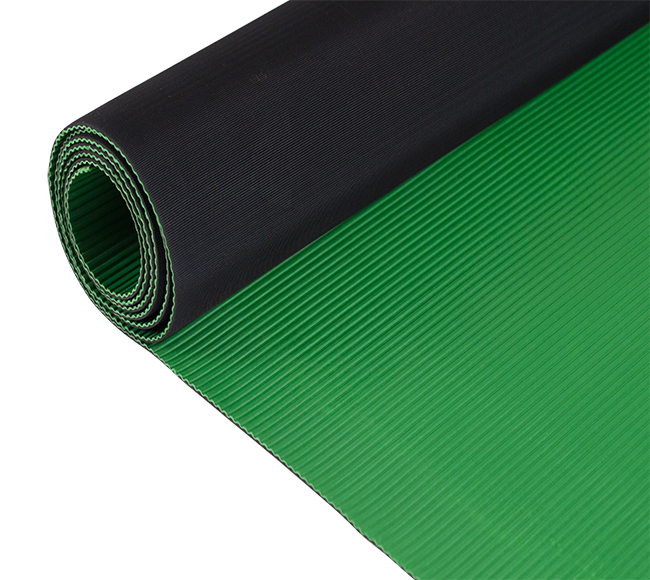Vacuum Laminating Machine Silicone Rubber Sheet
What is a Vacuum Laminating Machine Silicone Rubber Sheet?
A Vacuum Laminating Machine Silicone Rubber Sheet is a high-performance, heat-resistant silicone component designed specifically for use in vacuum laminating machines. These machines are primarily utilized in the photovoltaic industry for solar panel manufacturing, as well as in the PCB (Printed Circuit Board) and composite material industries. The silicone sheet acts as a critical barrier and cushioning layer between the heated platen of the laminating machine and the product being processed (e.g., solar cells or PCB layers). Its primary function is to evenly distribute heat and pressure while creating an airtight seal under vacuum conditions, ensuring a flawless, bubble-free lamination of the materials.
Key Features and Product Specifications
Our vacuum laminating machine silicone rubber sheets are engineered with precision to meet the rigorous demands of industrial lamination processes. Below are the detailed specifications presented in a clear, professional format.
Material Composition & Physical Properties
- Base Material: High-purity, platinum-cured Silicone Rubber (VMQ).
- Reinforcement: Woven fiberglass cloth or polyester mesh embedded within the silicone matrix for superior dimensional stability and tear resistance.
- Color: Typically red or translucent, depending on the specific grade and application requirements.
- Standard Thickness Tolerance: ±0.15mm
- Standard Hardness (Shore A): 60° ±5°
Performance & Technical Parameters
| Parameter | Specification / Value | Test Standard |
|---|---|---|
| Operating Temperature Range | -60°C to +250°C (short-term peaks up to 300°C possible) | ASTM D1329 / ASTM D573 |
| Tensile Strength | ≥ 8.5 MPa | ASTM D412 |
| Elongation at Break | ≥ 400% | ASTM D412 |
| Tear Strength | ≥ 30 kN/m | ASTM D624 (Die B) |
| Compression Set (22 hrs at 200°C) | ≤ 15% | ASTM D395 (Method B) |
| Thermal Conductivity | Approx. 0.2 W/m·K | ASTM D5470 |
| Volume Resistivity | > 1.0 x 10^14 Ω·cm | ASTM D257 |
Standard Size Configuration
We offer a range of standard sizes tailored to fit most commercially available vacuum laminating machines. Custom sizes can be manufactured upon request.
| Application | Common Sheet Dimensions (Width x Length in mm) | Common Thickness (mm) |
|---|---|---|
| Small Format PCB Lamination | 600 x 600, 650 x 650 | 1.5, 2.0 |
| Standard Solar Panel Lamination | 1100 x 1100, 1200 x 1200, 1400 x 1400 | 2.0, 2.5, 3.0 |
| Large Format & Industrial Lamination | 1600 x 1600, 1800 x 1800, 2200 x 2200 | 3.0, 3.5, 4.0 |
Why Choose Our Vacuum Laminating Machine Silicone Rubber Sheet?
- Exceptional Durability: Our sheets are formulated and reinforced to withstand thousands of lamination cycles under high heat and pressure, significantly reducing downtime and replacement costs.
- Superior Heat Distribution: The consistent material composition ensures uniform temperature transfer across the entire sheet surface, eliminating hot spots and resulting in a higher quality, consistent laminate.
- Excellent Release Properties: The non-stick surface of the silicone prevents adhesion to EVA (Ethylene-Vinyl Acetate) or other encapsulation films, ensuring easy demolding and a clean finished product.
- Low Gas Permeability: Essential for maintaining the high vacuum levels required during the lamination process, preventing bubble formation and delamination.
- High Purity: Platinum-cured silicone minimizes the risk of contamination, which is critical for sensitive electronic applications like solar cell manufacturing.
Frequently Asked Questions (FAQ)
General Questions
What is the typical lifespan of a vacuum laminating machine silicone rubber sheet?
The lifespan varies based on operating temperature, pressure, and maintenance. Under standard conditions (operating below 200°C with proper care), a high-quality sheet can last for 2,000 to 5,000 cycles. Factors like excessive temperature, mechanical damage, or chemical exposure can shorten this lifespan.
How do I know when it's time to replace my silicone rubber sheet?
Visible signs of degradation indicate the need for replacement. These include permanent creases or folds that won't relax, surface stickiness, discoloration (darkening or yellowing), a significant loss of elasticity, physical tears, punctures, or a noticeable decline in lamination quality (e.g., increased bubbles or uneven surfaces).
Can these silicone sheets be customized in size and shape?
Yes, we specialize in producing custom-sized and custom-shaped sheets to fit unique machine dimensions or specific application needs. This includes creating sheets with specific cut-outs, rounded corners, or non-standard thicknesses. Please contact our technical sales team with your requirements.
Installation & Handling
What is the correct procedure for installing a new silicone rubber sheet?
First, ensure the laminator's lower platen is clean, smooth, and free of any debris. Carefully unroll the new sheet and position it evenly over the platen, ensuring it lies flat without any wrinkles. Gently smooth it out from the center towards the edges to remove any trapped air. Do not stretch the sheet forcefully. Finally, close the machine and allow it to go through a few heat cycles without a product to allow the sheet to fully settle and conform to the platen.
How should I clean and maintain my silicone rubber sheet?
Regular cleaning is essential. Allow the sheet to cool completely. Use a soft, lint-free cloth lightly dampened with isopropyl alcohol or a mild, non-abrasive soap solution to wipe the surface. Avoid using sharp objects, abrasive pads, or harsh chemical solvents like acetone or toluene, as they can damage the silicone surface and reduce its performance. Always ensure the sheet is completely dry before the next use.
Performance & Troubleshooting
Why is uniform heat distribution so important in a vacuum laminating machine silicone rubber sheet?
Uniform heat distribution is critical because it ensures that the entire laminate (e.g., the solar module layers) cures and bonds simultaneously and evenly. Hot or cold spots can lead to defects such as incomplete curing, warping, internal stress, delamination, and the formation of bubbles—all of which compromise the product's structural integrity, efficiency (in the case of solar panels), and lifespan.
My laminated products are coming out with bubbles. Could the silicone sheet be the cause?
While bubbles are often related to the vacuum level or the lamination material (EVA) itself, a defective silicone sheet can be a contributing factor. Causes include microscopic pores or damage in the sheet that allows air to leak through, insufficient elasticity preventing a proper seal at the edges, or surface contamination preventing a tight vacuum. Inspect your sheet for damage and ensure it is clean and properly installed.
What is the difference between a silicone sheet with and without fiberglass reinforcement?
Reinforced sheets have a fabric (usually fiberglass or polyester) embedded within the silicone. This greatly enhances dimensional stability, preventing the sheet from stretching, tearing, or permanently deforming under repeated cycles of heat and pressure. Non-reinforced sheets are more flexible but are far less durable and prone to tearing, making them unsuitable for most industrial vacuum laminating applications.
Material & Compatibility
Is this silicone sheet resistant to oils and chemicals?
Silicone rubber generally has good resistance to water, ozone, and many common chemicals. However, it can be swollen or degraded by concentrated acids, alkalis, and solvents like ketones, aromatic hydrocarbons, and certain chlorinated solvents. It is crucial to prevent contact with such substances to maintain the sheet's integrity and performance.
What does "platinum-cured" silicone mean, and why is it better?
Platinum-cured (or addition-cure) silicone is a high-purity manufacturing process that uses a platinum catalyst instead of peroxides. It produces a silicone with extremely low levels of volatile by-products, making it virtually odorless and non-corrosive. This is essential in sensitive applications like electronics and solar panel manufacturing where outgassing could contaminate or damage the final product. Platinum-cured silicone also offers superior heat resistance and longevity compared to peroxide-cured alternatives.
- View as






